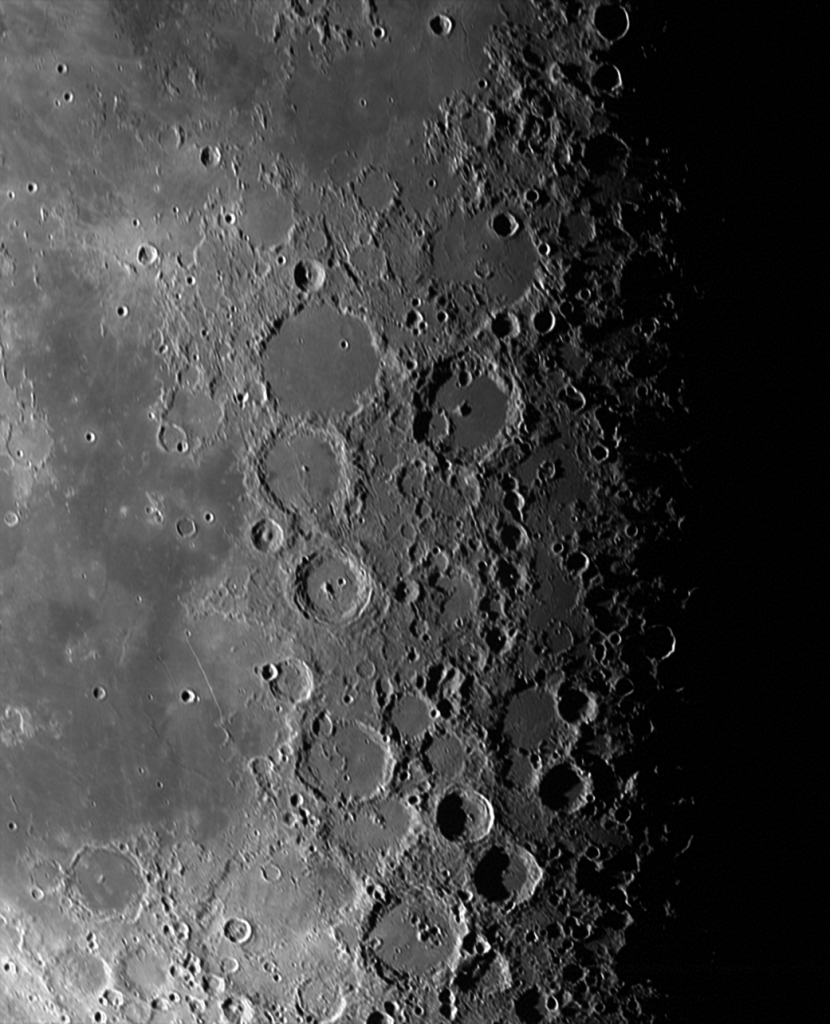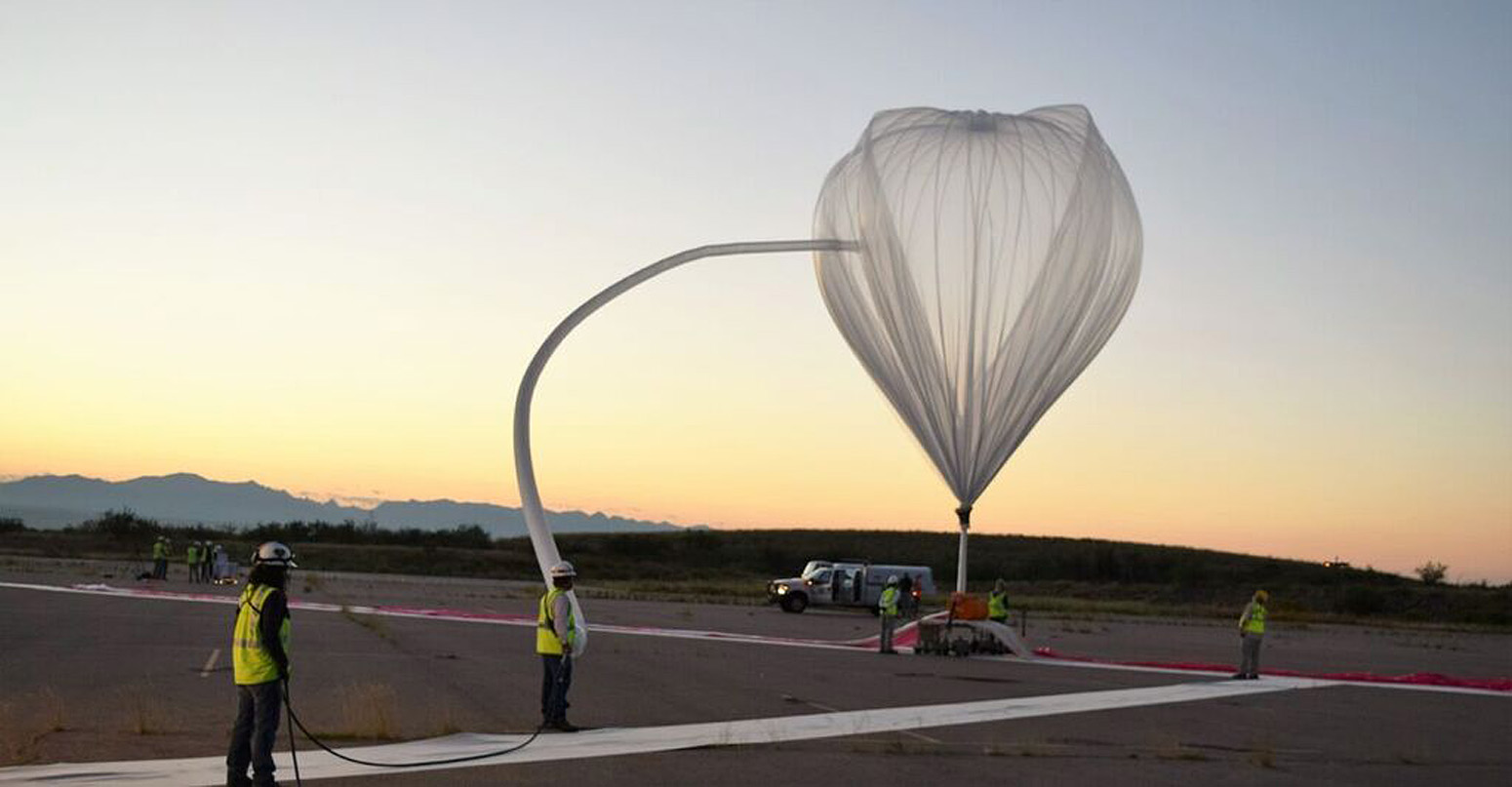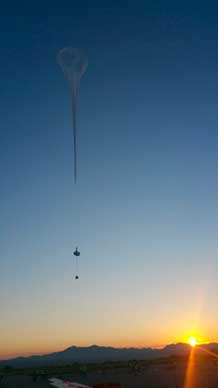A high-altitude balloon carrying a new, miniature solar-pointing platform was launched from Benson Municipal Airport in Arizona on Sept. 3. The instrumentation on the platform enables low-cost research with optical precision equivalent to pointing at a dime from 2.5 miles away.
World View in Tucson, Arizona, lifted Southwest Research Institute, SwRI, in Boulder Colorado., Solar Instrument Pointing Platform, SSIPP, aboard its Stratollite high-altitude balloon into the stratosphere. SSIPP is a complete, high-precision solar observatory about the size of a mini fridge and weighs 160 pounds.
Staying aloft for over five hours, the solar observatory platform was carried to an altitude of 103,000 feet on a flight funded by NASA’s Flight Opportunities program.
“The descent and custom systems worked just as designed and returned the SSIPP payload to SwRI in pristine condition with no noticeable damage,” said Rolfe Bode, senior aerospace engineer for World View. “Following the flight, SSIPP was checked out and all instrument functions including the optics were in working order.”
In future applications, the platform will gather solar data using infrared, ultraviolet or visible light near the edge of space, approximately 20 miles above the Earth’s surface. At this altitude, the observatory avoids image distortions caused by peering through the atmosphere that affect ground-based observatories.
“SSIPP could support the development of a range of new instruments for the near-space environment at relatively low cost,” said Dr. Craig DeForest, a principal scientist at SwRI. “Using a standard optical table platform increases flexibility, allowing scientists to try new things and develop new technologies without designing a custom observatory.”
The first scientific application of SSIPP is to search for signs of a solar sound wave in the solar atmosphere that is 10 octaves to 15 octaves below the bottom note on a piano, DeForest explains. The sun is covered with granular convection cells similar to a pot of water at a rolling boil.
He describes the process as millions of cells erupting endlessly that create sound waves with different frequencies. The SSIPP images these eruptions to understand the solar atmosphere’s heat and noise properties. Due to the high frequency of these waves they cannot be detected by ground observations.
“Funding flights on high-altitude balloons such as the Stratollite high-altitude balloon flight provided by World View opens the doors to many researchers to test their technologies in a space-like environment where they will eventually operate,” said Greg Noffz, NASA’s Flight Opportunities program chief engineer.
Through the Flight Opportunities program, NASA’s Space Technology Mission Directorate, STMD, selects promising technologies from industry, academia and government, and tests them on commercial launch vehicles. The Flight Opportunities program is funded by STMD, and managed at NASA’s Armstrong Flight Research Center in Edwards, California. STMD is responsible for developing the crosscutting, pioneering new technologies and capabilities needed by the agency to achieve its current and future missions.
For more information about the Flight Opportunities program, visit:
https://www.nasa.gov/directorates/spacetech/flight_opportunities/index.html































